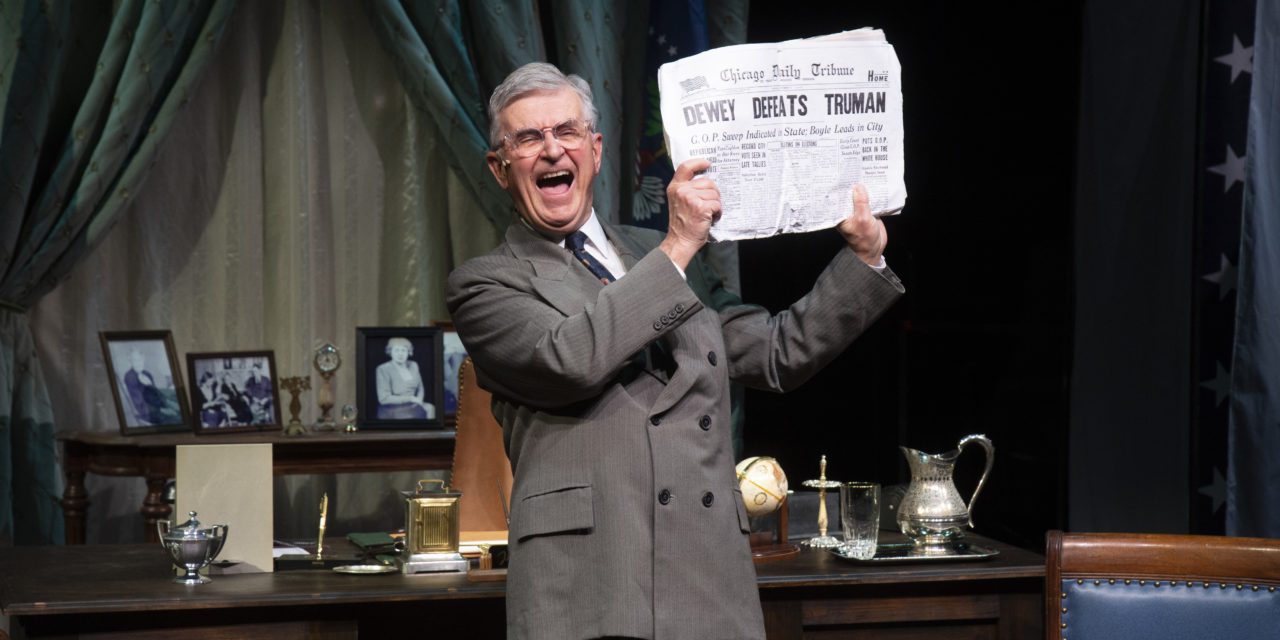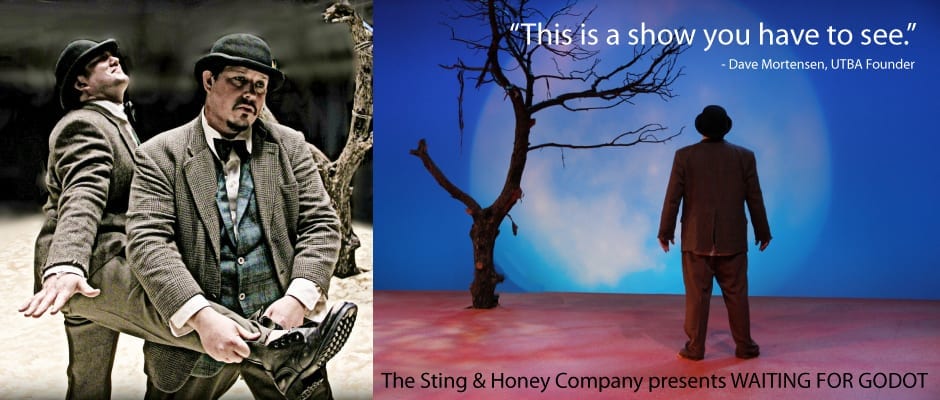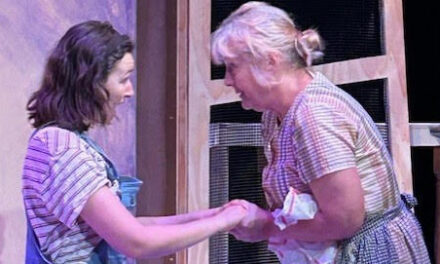WEST VALLEY CITY — Playing through April 2nd in West Valley, the Utah Shakespeare Festival’s production of Samuel Gallu’s Give ‘em Hell, Harry! is both exactly what I expected, and nothing like what I expected.
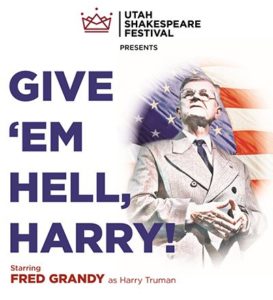
Show closes April 2, 2022.
Give ‘em Hell, Harry! is a one-man play in which Harry Truman tells his life story, and in some ways, the story of the United States during his lifetime. What I did expect was the life of Harry Truman. What I did not expect was the warm feeling in my chest as I left the theater. It’s not as if I agreed with everything Truman said or did, but this non-chronological story left me feeling an intense Something.
Truman is played in this production by Fred Grandy, popularly known as Gopher on The Love Boat, as well as a former member of the United States House of Representatives. Grandy’s performance is uncanny. From the moment he walks on stage, he holds himself in a very distinctive way, and easily embodies President Truman. Grandy’s Truman, with the clear guiding hand of director Hunter Foster, was a completely three-dimensional, complex character. He started out charming, funny, and a seemingly good businessman. But as he began telling stories of war, he was harsh, and mean, and unapologetic. The fatherly jokester the American people saw on his campaign tour was very much the same man that was proudly responsible for the nuclear attacks on Japan. Grandy flowed beautifully through each story and each emotion. He went through the entire script without fail, and the few times that he did struggle to find the next word were handled without flaw.
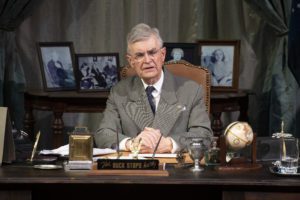
Fred Grandy as Harry Truman in the Utah Shakespeare Festival’s 2022 production of Give ‘Em Hell, Harry! presented at the West Valley Performing Arts Center. (Photo by Karl Hugh. Copyright Utah Shakespeare Festival 2022.)
However, as Truman spoke to the various characters that were “on stage” through the shared imagination of the room, I was a little confused because it did seem a bit like Grandy was looking his invisible companions in the knees rather than in the eyes.
The lighting design, by Scott Palfreyman, is one of the most distinctive parts of the production. The lighting is sharp and well-placed. Each invisible person that Truman talks to is represented by a light, each with their own colors and shapes. Every light told me what I was supposed to think of the person, and (with the exception of the very bold pink chosen for the character of Rose) every light brought me into the tone of the new scene. There was one cue where Truman went and sat at his desk, and the spot change over to the new area was so beautiful. For the life of me, I cannot remember what story Truman was telling, but that image will stay in my mind.
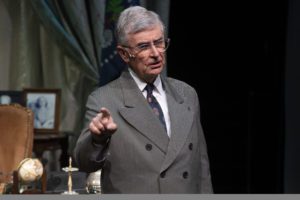
Fred Grandy as Harry Truman in the Utah Shakespeare Festival’s 2022 production of Give ‘Em Hell, Harry! presented at the West Valley Performing Arts Center. (Photo by Karl Hugh. Copyright Utah Shakespeare Festival 2022.)
At the West Valley Performing Arts Center, the set is always inescapable. Even when the theater is configured as a makeshift thrust stage, it is hard to hide the set. Dan Giedeman’s set design conveyed the American Dream that Truman represented for many. Parts of the Oval Office were center stage, with various other props used in the show surrounding it. I never had to guess what theme of show I was seeing. Indeed, for most of the show, I was on the edge of my seat, trying to figure out how they would incorporate the lawn mower into the story. Truman’s suit, designed by Lauren T. Roark, was period and well-fit. It’s difficult to comment on the costume design of only one actor, but what I can say is that Fred Grandy looked exactly what I expected President Truman to be. And I liked the pattern on his tie.
As interesting as the Truman administration was, and as phenomenal as Grandy’s performance is, I am not the target audience for Give ‘em Hell, Harry!. This play is probably most enjoyed by those who are familiar with every detail about World War II. They are the people who will catch every reference, and be able to gleefully think, “Hey, I know that!” Yet, while I am not the target audience for Give ‘em Hell, Harry!, it was endlessly impressive nonetheless.

These reviews are made possible by a grant from the Salt Lake County Zoo, Arts, and Parks program.

